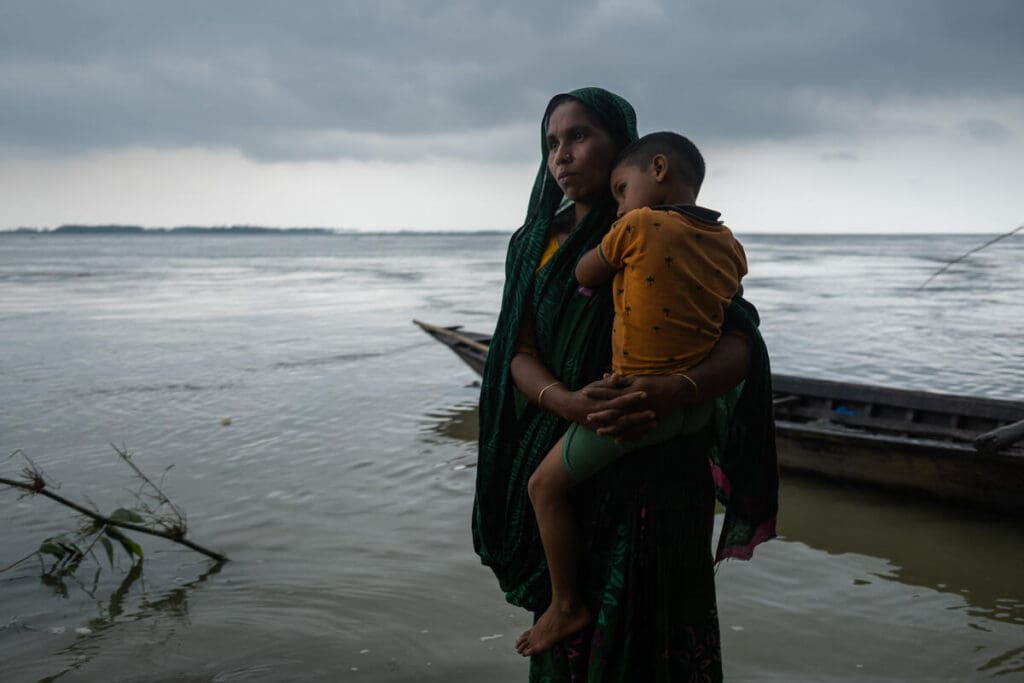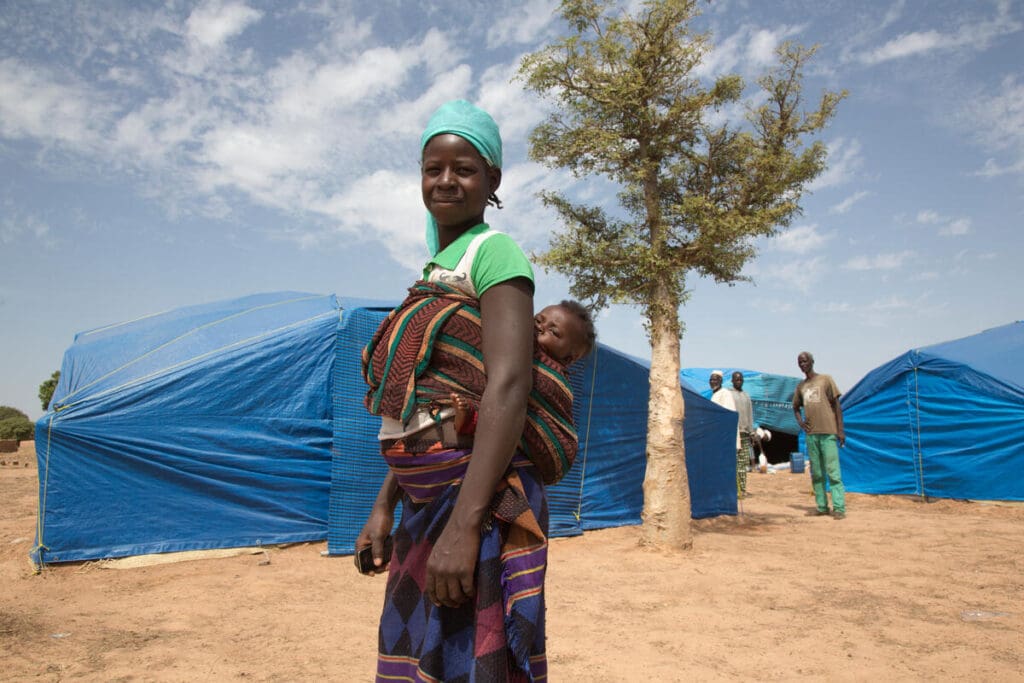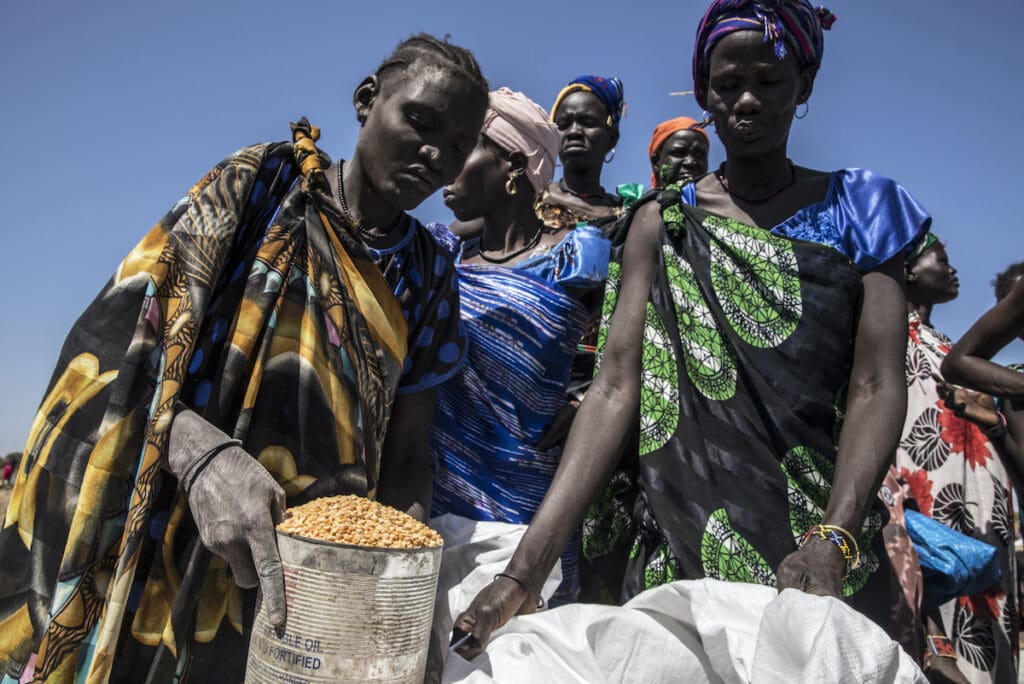Mustering Hope to Reduce Global Hunger in 2021

In 2020, hope took a battering.
Even before the year began, there had been a troubling rise in the number of people going hungry around the world. But we had every reason to believe we could eventually — with enough resources, hard work and new ways of solving stubborn problems — put hunger on the decline, with the ultimate goal of eliminating it altogether.
That is, until the epic crisis of 2020 drove even more people into perpetual hunger than we expected and knocked hope to its knees.
Mind you, the United Nations World Food Programme (WFP) never abandons hope, and we are applying it and much more to roll back one of the most severe hunger catastrophes in our six decades of existence. No doubt, COVID-19 was a prime, but not solitary, suspect in this story as it aggravates an already thorny problem.
The crisis of 2020 brought millions more people around the world to the brink of the most extreme stage of hunger: famine. People who face famine are starving and have only a few more days or, at most, weeks to live, and famine occurs when the global humanitarian system has failed and the focus of relief switches to assisting those who can be saved.
Eight months into the pandemic, the U.N. World Food Programme calculated 270 million people were severely hungry and on the brink of starvation due to the compounding effects of COVID-19, an alarming rise of more than 80 percent above pre-pandemic trends.
In response, we scaled up to deliver the largest response in our history, reaching 97 million people in the first nine months of 2020 – almost the same number we served in all of 2019. And now, according to figures released in December, there are currently 151 million people facing severe hunger, including 30 million at risk of starvation across 40 countries. The U.N. World Food Programme is calling for $5 billion to set up a rapid-response fund and do its utmost to make sure famine does not happen.

Fleeing violence, families across Burkina Faso are struggling to find food. We’re trying to reach them as fast as we can.
The gap in funding has already forced us to make really hard decisions: namely, to cut rations and reduce our reach:
- In Colombia, we have struggled to fully serve the additional people who were facing food insecurity.
- In Madagascar, we were only able to provide food assistance to 37 percent of those who needed us.
- In the Democratic Republic of the Congo, refugees have been receiving only 75 percent of their food needs due to financial shortfalls.
We also face similar and heartbreaking circumstances in our work with growing numbers of displaced people in Burkina Faso, Cameroon, the Central African Republic and parts of East Africa.
The U.N. World Food Programme has long been, in alliance with partners, the core of a vital humanitarian system. But 2020 rendered our famine prevention work much more difficult than it was even a year ago. The number of those standing at the precipice of famine spiked to approximately 30 million people (a disproportionate number are women and children) because of the toxic mixture of pandemic disruptions and the punishing effects of conflict and the climate crisis, two of the biggest accelerants of hunger. Right now, the specter of famine hovers over three dozen countries, but it is most imminent and profound in four countries, which are, not coincidentally, plagued with many other humanitarian challenges:
- Yemen
- Northeast Nigeria
- Burkina Faso
- South Sudan
So where is the hope in all of this?
Well, in all the countries where the tide of hunger is rapidly rising, we continue to play a frontline role in pushing it back. We not only provide direct food assistance but also, where conditions allow, cash and cash-based transfers that allow people to make their own food choices and inject much-needed money into the local economy.
In South Sudan, for example, the U.N. World Food Programme and its partners have pioneered an Integrated Rapid Response Mechanism that sends mobile response teams to remote, isolated areas where many people are cut off from lifesaving aid. Traveling usually by helicopter and sleeping in tents, our teams register people and transport food, nutrition supplies and other assistance by road, river or air.

Women collect bags of food delivered via WFP air drops in a South Sudanese village – part of our rapid response efforts.
Another source of hope: heightened recognition of the crisis has generated more support for what we do – from both private and sovereign donors. The Nobel Peace Prize bestowed upon the U.N. World Food Programme a little more than a month ago significantly raised our profile and did so with impeccable timing. It drove greater awareness of what is arguably one of the most challenging moments in our history.
The American legacy of supporting food aid is another source of hope: Our supporters stepped up in 2020, and there is every indication they will continue to in 2021. A few weeks ago, I reported here that in 2020, World Food Program USA collected 40 percent more donations from the American private sector – individuals, corporations and foundations – than we had expected to when the year began. Much of this money came in long before any news of the Nobel Peace Prize. Americans were well aware of the tragic spread of hunger in 2020, and, more importantly, they responded with compassion and generosity. To tackle the continuing hunger crisis, we will need much more of that in 2021. All this gives us hope, even as we head into a year that will certainly be one of the toughest the U.N. World Food Programme has ever faced. With it – and the support from private and public sector donors – we believe we can meet the challenge.
Please join us on that journey.




